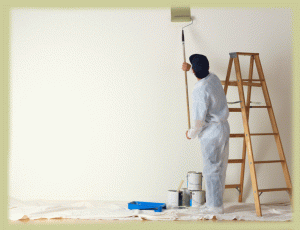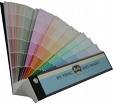Smelly walls, what’s that all about?

The cause could possibly be from carcinogenic chemicals called VOCs that off-gas into our home’s air from the paint we are applying to our walls!
VOCs, also known as Volatile Organic Compounds are a large group of carbon-based chemicals that evaporate at room temperature. VOCs are found in many products within our homes, but for the sake of this blog, I will be referring to paint. Just to give you an idea of some other products that contain VOCs: carpets, adhesives, vinyl flooring, composite wood products, upholstery fabrics and solvents, to name a few.
My knowledge of VOCs came about after becoming quite sick after living in three very different homes. Our first residence was a condominium in Lynn. It was a Victorian home that had been completely gutted and renovated. New carpets, paint, flooring, and composite wood cabinets had been added shortly before we had moved in. I was sick for the first six months of living in this home. Not having a knowledge about VOCs 20 years ago, I sought the help of my doctor for a diagnosis. After being bounced back and forth to various specialists, the doctors sited sinus issues. Six years later, we moved to Georgetown. This home was of new construction; new carpets, paint, kitchen and bathrooms contained vinyl flooring, composite cabinets, and plastic laminate counter tops. You guessed it, I became sick. Very sick. So much so that the doctors were now thinking it could even be neurological. I honestly don’t remember my course of treatment, but suffice it to say, it involved taking more medication than I would have liked. Five years later, we moved to our current home in Hamilton. One hundred year old Victorian with natural hardwood floors, original wood wall panelling on the entire second floor, painted plywood kitchen cabinets, 25 year old vinyl flooring in the kitchen, no carpeting, no new wall paint. We moved in and surprise: I didn’t get sick! At the time, I didn’t quite know why I wasn’t sick, I was just grateful.
I had learned that I had chemical sensitivites to a variety of home interior finishes. All of the items I have listed above contributed to my illness, not just the paint. As I shared my story and the symptoms I suffered, I found other people who were experiencing similar issues of headaches, dizziness, irritations and nausea from exposure to VOCs within their homes. That was my aha moment. I had been looking for purpose within my interior design business and learning more about safe products to specify for my clients provided me with a new way of creating beautiful and healthy environments for them.

About five years ago, I became aware of the “Green Movement” in my industry of interior design/construction. Recycling, reuse, repurposed and sustainable products. I also began learning about VOCs. There weren’t many new products available touting no VOCs, but a client in Marblehead brought a paint manufacturer’s name to my attention for a project I was working on for her. It was an alternative to traditional latex wall paint. That was my introduction to Safecoat paints. www.afmsafecoat.com At that time, the colors were limited to mostly pastel tones. I learned that the darker and deeper colors can increase the VOC levels by adding colorants to the base paint. For most paints the darker the tint, the higher the VOC of the final blend. By adjusting the levels of VOCs allowed in base paint and including criteria for colorants, the new standard ensures that even a heavily tinted paint will still contain minimum VOCs.
I feel it is my obligation to share my knowledge based upon my own experiences with my clients. I typically will encourage them to use low or no VOC paints in their homes, especially if they have children or newborns. According to the EPA, our indoor air quality is three times more polluted than outdoor air. It is considered one of the top five hazards to human health. Based on that information, if you had the ability to reduce that health risk, wouldn’t you?

There are many manufacturers that can provide low-VOC and no-VOC paint options. Here are a few that I specify for my clients:
- Olympic: Premium, no-VOC www.olympic.com
- Sherwin Williams: Harmony, no-VOC www.sherwin-williams.com
- Mythic Paints, no-VOC www.mythicpaint.com
- Benjamin Moore: Natura, no-VOC www.benjaminmoore.com
- The Real Milk Paint Company, no-VOC www.realmilkpaint.com
For those interested in a beautiful finish that is more than just paint on your wall surfaces, I might suggest, American Clay, www.Americanclay.com. It is a plaster product that creates a wonderful textured wall surface and has no-VOC.
Paint enhances our environments. Specifying and purchasing safe products allows us to improve the air quality in our homes and offices. If you are interested in learning more about low-VOC and no-VOC products please feel free to contact me at: www.lmkinteriorsltd.com

Once again, wonderfully written!! Keep them coming!
Love Leslie
Terrific information, Lisa — and very well presented. (Thanks for the link to this through your Connect the Dots e-letter, by the way.)
Perhaps in a future post you might look at no- or low-VOC options in vinyl flooring — are there any? After 20+ years, our vinyl tile floor in the kitchen owes us nothing, but is really showing its age — and I’m wondering what the best options are for replacement.
Kate
very informative article – I had no idea about this!
thank you for sharing 🙂
Thank you Lisa.
Very useful information. Great story! Sorry you had to suffer all of those years. Now we can all benefit from your unfortunate experience. You’re a excellent writer. I’m already looking forward to the next issue of Connect the Dots.
James